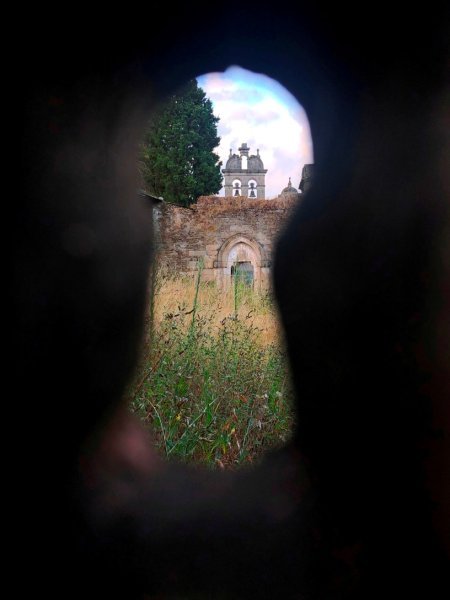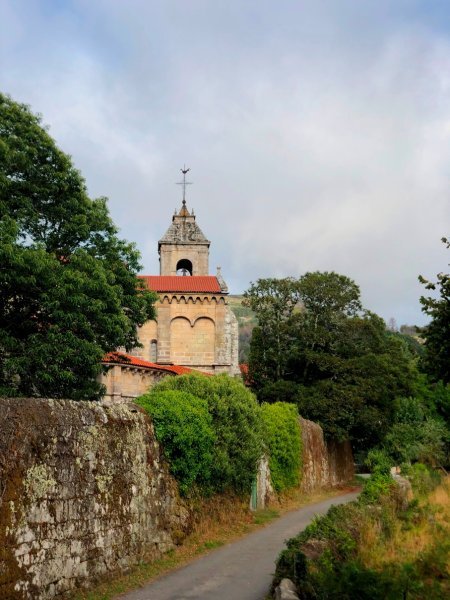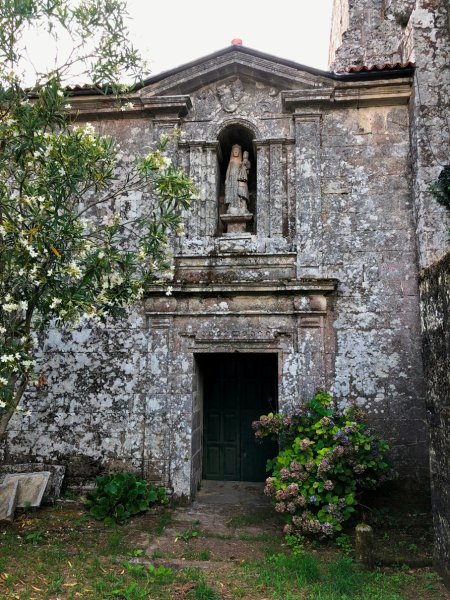Nostalgia for Abandoned Places
galicia | Dec 2019

The enchanted ruin, its stonework overgrown with brambles and ivy in that slow but inexorable progress of nature overcoming human order. An order, both ephemeral and logical, giving way to the timeless, the natural.
Will the ruin, on its way back to a primitive state despite man’s interference, appear charming to us? Will we enjoy seeing nature’s obvious dominance over our grand, yet meagre plan? Or perhaps what will please us is that unspoilt display of a world that, over time, we have come to rather idealise? Or, quite simply, because it satisfies some romantic notion of life?

Europe began, during the Renaissance, to appreciate the ruin as an expression of an ancient world whose expression and structure was worth imitating. The ruins were looted and their remains were reproduced in a modern architectural version as copies of decorative illustrations “Pompeii” style that one saw in all the palaces of Europe and the rescue of sculptures, such as the Laocoon were to change the course of art history by giving way to Mannerism. But the true value of the ruin, with its visual and aesthetic sense, as well as, at the same time, its brooding melancholy that were seen as the golden age, were to be depicted only in the hands of the French and Dutch painters taken with Roman Barroque (Claudio de Lorena, Gaspard Duquet, Jan Baptist Weenix and Jan Both, amongst others) and it was not until the start of the 18th century with the prominence of the English Landscape Garden that the ruin became part of landscape design.
It seems to us romantics, in love with History that any other time speaks more to us than the present but I am becoming more and more certain in my thinking that this is the wrong approach given that man, with his light and shade, has been the constant protagonist.
Galicia has been, for me, the most accurate melting pot for this sense of romanticism. Ever since my childhood, the family’s ancestral home, our mythical Granxa d’Outeiro in Francelos (Ribadavia) had already been devoured by hydrangeas and brambles and the once-flourishing vineyards of Don Benigno Pereira-Borrajo with its famed terroir had fallen into ruin through the indolence of one of “old” Spain’s foremost families. That return of a glorious time, both beautiful and decadent, was what drove us on those forays in search of the timeless, monastic ruin, jumping walls and fighting through brambles to find ourselves in that solitary space where the soul rejoices.
Galicia, at its western end and the end of the pilgrimage route, has always been a special place for monastic settlements. Hillsides, forests and remote valleys were the locations chosen by the Benedictines and the Cisterians to create settlements of stone, many of which were in a ruined state by the end of the twentieth century through their abandonment as a result of being passed into private hands upon the dissolution of church property. Ruins in desolate places, for ever reminding us of those past times that we imagine to have been better.
Times in which the monastic settlements represented a veritable constellation around the sacred Campus Stellae beneath which the remains of their Patron Saint rested. A spiritual and civilising reference point for the cultured - noble yet warlike people of the forts and castles who, with times of peace, became “pazos” - and another great cultural heritage of rural Galicia.
With the establishment of the monastic orders, the cultivation of the vineyards was revitalised, developed by the Romans but left to ruin. In settlements such as the Ribeira Sacra, the picturesque ruins together with the beauty of the formal vineyard cultivation on the steep slopes of the Sil and Miño canyons have made it the most sought-after destination of inland Galicia. Inland, far away from the soothing of peaceful streams and from the endless eucalyptus that have banished from the banks of the riversides all oak, cork, birch, ash and alder. This interior, with such a heart of green, the hills of Courel, of Invernadoiro and of the Ancares, in where, in amongst the heather there are robust oak and birch trees that once predominated and will do again, covering as a blanket this sacred and stoney land.

Over the years I have experienced that deep emotion felt by Galicians when they speak of “morriña” that the RAE defines as “sadness or melancholy, especially towards one’s homeland” and despite not being an emigrant nor having been born in a monastery in the middle of some desolate place - nevertheless, I feel “morriña”. Homesick for the abandoned places of my adolescence that were lived in, once, around the Galician countryside. Santa María de Aciveiro, high up in the hills amongst holly and oak. Santo Estevo de Ribas de Sil, established as a Master with his history of art, written in the cloisters, above the great river. Santa Cristina, in Ribas de Sil too, magical, amongst the centuries-old chestnuts of the Ribeira Sacra. San Juan de Caaveiro in the dense tangle of the Atlantic forest and some, strange and marble-like, as San Pedro Fiz in the remote region of O Incio, one of the best-kept secrets of the mountains of Galicia.
Today, many of them restored and made available for cultural and display purposes which pleases me but does not diminish my homesick feelings for Galicia, that place of the smell of cows and of damp moss, the musical sound of the cart. A Galicia where country ways permeated everything, women in clogs and shawls at the door to offer vegetables and fresh eggs from their hens and who took away the “lavadura” (organic kitchen scraps), saved to be given to the pig. A Galicia carved from granite, baked in cornmeal, land of emigrants, its story told by Eduardo Blanco Amor, Wenceslao Fernández Flórez y Torrente Ballester and painted by Fernando Álvarez de Sotomayor and by my great-uncle Benigno Pereira Borrajo, celebrated for his famous wines, fruit of the banks of the river Miño, and who took such care of his dahlias and hydrangeas and who liked best to paint the local people.
We still have some of those stoney beauties slumbering in the poetry of their age, like San Paio de Abelenda in a harmonious blend between the stone, the garden and the vineyard. Santa María de Melón with her Cistercian ambulatory and Gothic and renaissance cloisters. Santa María de Oia, set on the beach overlooking the Atlantic and San Julián de Moraime, surrounded by black hens, guarding a collection of gothic frescoes depicting the cardinal sins which so captivated me that it gave me the life of a gardener and a constant traveller.
“Ruins in desolate landscapes, always evocative of those past times that we imagine were better”.
The remains of that which they once treasured knowledge in their libraries, songs for their choirs, traditions in their ceremonies and collections of medicinal plants grown in gardens that supplied apothecaries and home kitchens. Among ruined stones and toughened brambles, sometimes you can still find, even after centuries, lilies, roses, lilac and celindos that, together with other aromatic plants, still perfume these abandoned walls.
A world in which all vision and light was extinguished leaving only shadows, starting with the requisition, then the confiscation thus the door to abandonment is opened and the beautiful, melancholy and poetic ruin disappears as the pendulum of the world moves and I am overcome with homesickness.
